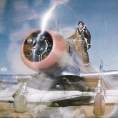Two Lessons From The DCA Crash
-
Members Online
- Gary D
- kortopates
- wstull87
- 47U
- hazek
- bluehighwayflyer
- PeteMc
- wombat
- 1980Mooney
- Greg Ellis
- LANCECASPER
- MooneyMitch
- Rick Junkin
- Officer25
- Ragsf15e
- Parker_Woodruff
- warren.huisman
- Utah20Gflyer
- ElkoRandy20J
- redbaron1982
- Mdillard
- mgtrevor
- dkkim73
- TangoTango
- Nick G
- MikeOH
- donkaye, MCFI
- natdm
- johnwheeler
- Igor_U
- DC_Brasil
- eman1200
- YuriE


Recommended Posts